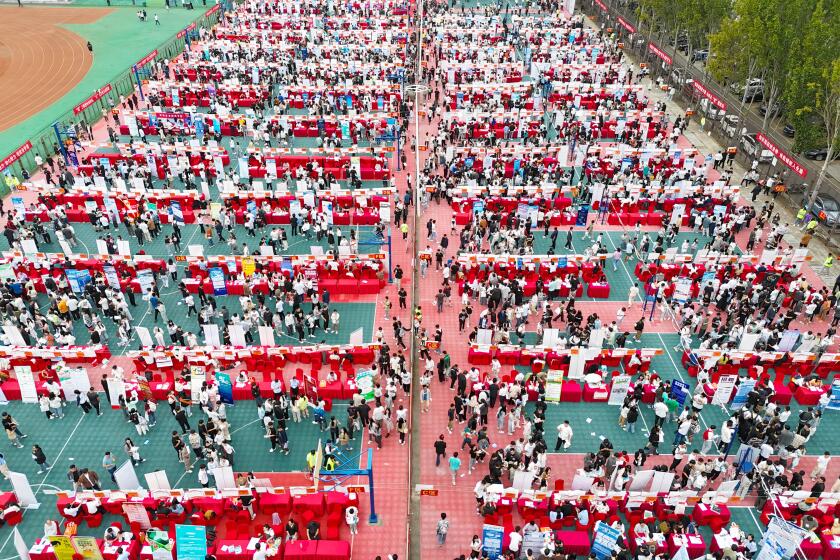China’s population falls for a second year in a row as COVID restrictions end

- Share via
BEIJING — China’s population dropped in 2023 by 2 million people — the second consecutive annual drop as births fell and deaths increased after the lifting of COVID-19 restrictions, the government said Wednesday.
The number of deaths rose by 690,000 to 11.1 million, more than double last year’s increase.
Demographers had been expecting a sharp rise in deaths due to outbreaks of COVID-19 that started at the end of 2022 and continued through February 2023.
The total population stood at 1.4 billion, the statistics bureau said.
China, long the most populated country in the world, dropped into second place behind India in 2023, according to United Nations estimates.
The number of births fell for the seventh year — a declining birth rate that presents a long-running economic and societal challenge for China.
Its population is aging steadily, which could slow economic growth over time and challenge the nation’s ability to provide for a larger population of older people with fewer workers.
The number of births fell by 540,000, which was a smaller decrease than in previous years. About 9 million babies were born in 2023, half as many as in 2016.
All of the government’s figures are estimates based on surveys, and do not include Hong Kong and Macao. China conducts a full census every 10 years.
The country, which once sought to control population growth with a one-child policy, is now facing the opposite problem. The government has sought to encourage births — gradually easing the policy from 2014 to 2016 to allow a second child, and then in 2021 to allow a third child — but with little success.
Incoming Taiwanese President Lai Ching-te must grapple with an increasingly fraught relationship with China that has edged closer to armed conflict.
People are marrying later and sometimes choosing not to have children.
Even those who do often have only one child due to the high cost of education in cities and a highly competitive academic environment. The population of women of child-bearing age has also fallen.
President Xi Jinping told the new leadership of the All-China Women’s Federation in October that young people need stronger guidance on marriage, parenthood and family, including policies that support parenthood and deal with the aging of the population, according to a report on a government website.
“We must tell good stories about family customs, guide women to play a unique role in promoting the traditional virtues of the Chinese nation and establishing good family customs, and create a new culture of family civilization,” Xi was quoted as saying.
The working-age population, defined as those between 16 and 59 years old, fell to 61% of the total population, continuing a gradual decline. The proportion of those aged 60 and older ticked up to 21%. The official retirement age in China is 60 for men and 50 or 55 for women.
As unemployment rises in China, some young adults become ‘full-time children’ at home with their parents. Critics call it ‘gnawing on the elderly.’
It is not clear how many people died due to the sudden end of China’s “zero-COVID” restrictions in December 2022. The government reported about 80,000 deaths related to COVID between December 2022 and February 2023, but experts believe the toll to be much higher. Studies have estimated as many as 1.4 million to 1.9 million people may have died of COVID-related causes.
China’s population is expected to drop less this year due to the waning effects of the pandemic and the fact that it is the Chinese zodiac’s Year of the Dragon — which is considered an auspicious year in which to have children — an expert said at a forum earlier this week, according to the China Daily, an English-language state-owned newspaper.
But Yuan Xin, a professor at Nankai University and vice president of the China Population Assn., also said that “the downward trend in China’s total population is bound to be long-term and become an inherent characteristic.”
More to Read
Sign up for Essential California
The most important California stories and recommendations in your inbox every morning.
You may occasionally receive promotional content from the Los Angeles Times.











